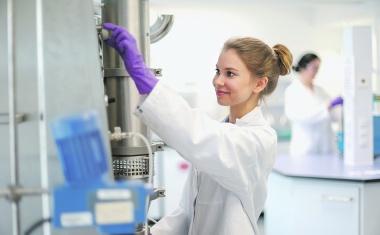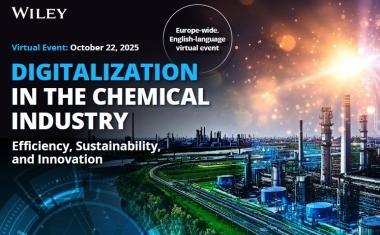
Analysts love looking into the future, particularly when it comes to big pharma’s prospect for growth and earnings. The industry experts of Morningstar see slowing patent losses over the next five years. This should accelerate the growth rates of big pharma firms and increase returns on invested capital as new pipeline drugs launch.
Chicago-based provider of investment research Morningstar defines the biggest change in this year’s analysis as the decreasing exposure of pharma to patent losses. As the patent cliff peak has worked through the system, big pharma’s five-year generics exposure now looks the lowest since before 2010. In aggregate, analysts Damien Conover and Sonia Vora view big pharma as 7% undervalued, largely driven by overly pessimistic pipeline expectations.
The slowdown of generic competition should considerably increase the five-year annual compound growth rates of big pharma companies, from the flat earnings growth that was expected in 2011 and 2012 to the 6% the analysts currently model for 2014-2019.
A major parameter of the effect from patent losses is the potential success of biosimilars. Conover and Vora expect that global sales for the top 10 biologics facing biosimilar competition will decline from $62 billion in 2014 to $35 billion in 2020.
More Biologic Therapies
With regard to research and development, the significant trends are reduced development time to bring drugs to the market and an increasing focus on developing biologic therapies rather than traditional small-molecule drugs. In the view of Morningstar, the US Food and Drug Administration appears very accommodating in approving drugs on early-stage data in indications of unmet medical need. The recently approved immuno-oncology drugs and other cancer drugs offer the best evidence to support this trend.
Conover and Vora calculate total biologic sales to represent over 30% of big pharma total sales over the next 10 years, up from close to 20% in the moment. The increased representation from biologics should prolong the branded life of drug portfolios, as biosimilar competition seems much less severe than traditional small-molecule generic competition. The four leading companies with expanding biologics include Bristol-Myers Squibb (BMS) and Merck, both with leading positions in immuno-oncology, Eli Lilly with immunology- and oncology-focused monoclonal antibodies, and Sanofi with its biologic cholesterol-lowering drug Praluent.
Sanofi, Novartis and Eli Lilly on Top
In total, the analysts score Sanofi at the top, followed by Novartis and Eli Lilly. The analysts note Sanofi’s robust growth from currently marketed products, and minimal patent losses in the next five years. Sanofi’s continuously growing rare disease, consumer, vaccine and animal-health segments, combined with an improving late-stage and mid-stage pipeline, led by the recent approval of Praluent, more than offset limited generic competition to long-acting insulin Lantus.
Adjusting for total size, BMS scores at the top of the group and looks undervalued, mainly driven by a strong entrenchment in immuno-oncology. Bristol’s likely first-mover advantage in several cancer indications along with several combination cancer assets in early-stage development should lead to Bristol gaining over a third of the $30 billion+ immuno-oncology market by 2022.
Morningstar also lists the most underappreciated pipeline drugs by consensus. These include AbbVie’s fibroids drug candidate Elagolix, Bayer’s diabetic neuropathy project Finerenone and Bristol-Myers Squibb’s cancer drug candidate Opdivo.
No More Big Bets on Potential Blockbusters
Pharma experts from the international auditing and consultancy organization Price Waterhouse Coopers (PwC) predict that shifts in the market are forcing scientists, executives, regulatory bodies, health-care officials and pharmaceutical investors to take a hard look at the sector and rethink how to do business. As PwC notes in its “Pharma 2020″ report, the era of making big bets on potential blockbuster drugs is over.
In 2016 and beyond, health-care policymakers and payers will play a much greater role in the industry. PwC states that these parties are increasingly mandating what doctors are allowed to prescribe. More and more of them are moving toward measuring the pharmaeconomic performance of drugs. The prevalence of electronic medical records is facilitating this methodology, as such records offer the data required for outcome-based pricing.
Meanwhile, diseases that were previously considered fatal are becoming chronic in the face of more effective treatment. In the view of PwC the recent growth of chronic disease is placing greater pressure on health-care budgets in times of an aging population.
2.5 Million Terabytes of Data per Day
As data is changing the way that health-care payers evaluate a drug’s worth, data is also transforming the methods by which new drugs are developed. PwC claims in its report that people generate approximately 2.5 million terabytes of data per day, and this figure is set to grow in 2016 with the increasing prevalence of pervasive monitoring and “anywhere interface” technologies.
This data has the potential to radically transform the way the pharmaceutical industry operates, especially in relation to research and development. This progress is particularly evident in generics research, PwC suggests.
Biosimilars Cut into Pharma Sales
Sanford C. Bernstein, a research and brokerage firm in New York, in its analysis of the pharmaceutical industry looks at several big-name drugmakers as of 2025. The company expects that biosimilars and regular old generics will continue to cut into pharma sales, but if pipeline drugs come through, drugmakers could see accelerated growth down the line.
By these lights, no company holds as much promise as Bristol-Myers Squibb, which stands at the top of Bernstein’s rankings for revenue and earnings growth. Sanofi ranks in second place for growth in its current lineup of drugs. GlaxoSmithKline, in third place with its present drug stable, drops to fifth with pipeline medicines.
One big caveat, however, as the Bernstein analysts point out: The numbers don’t include the $160 billion Pfizer-Allergan merger, set to close this year. When those two companies combine, the new Pfizer is likely to move up the rankings.
German Pharma with Bunch of New Drugs
Looking at the German pharmaceutical market for this year, the German pharmaceutical association VFA outlines the upcoming results of research and development. New drugs will result in new therapies and possibilities for prevention. Thus a two-digit number of new cancer drugs — mainly against lung cancer, multiple myeloma and several types of leukemia — should obtain regulatory approval. The VFA says that also the repertoire of highly effective drug combinations to cure hepatitis C is still growing. It is also likely that new antibiotics will be available to treat problematic bacteria.
It is also expected that several new drugs for the treatment of hemophilia A and B will come to the German market. They don’t need to be injected as frequently as older drugs and should be applicable in patients where former drugs aren’t effective anymore.
Furthermore the VFA estimates more than 10 new medications in 2016 for the treatment of rare diseases, including inherited metabolic disorders or muscle diseases.






